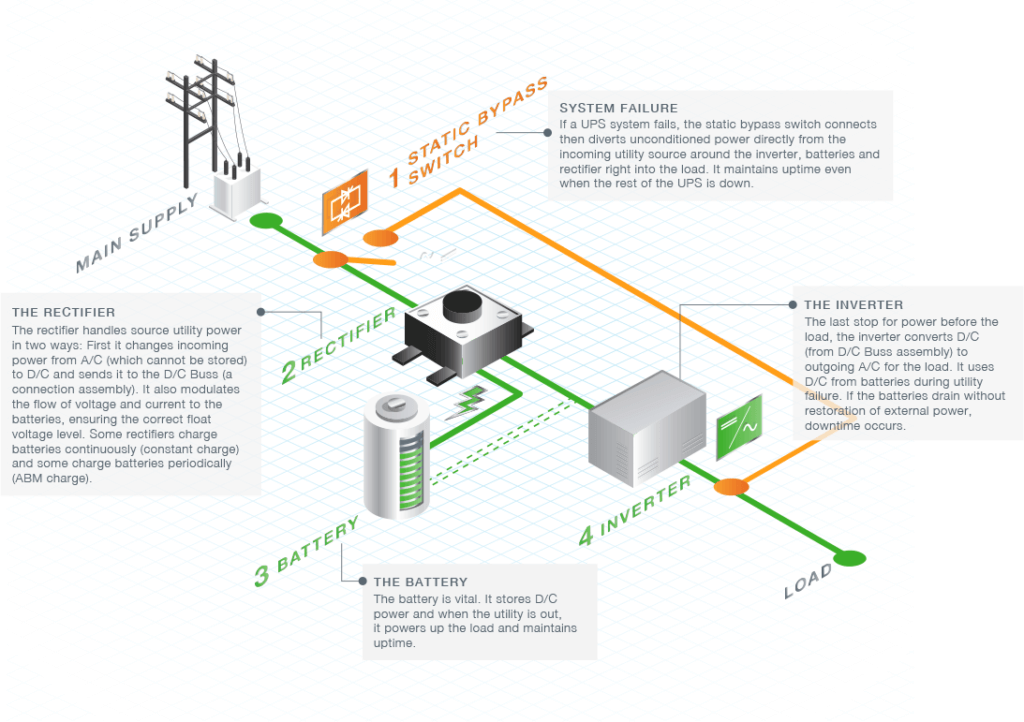What Happens When the Power Goes Out?
When the power fluctuates or fails, a functioning UPS system prevents loss, continues revenue generation and protects buildings, equipment and inventory. This graphic gives a visual representation of how the power grid and your UPS systems engage.

Converting AC to DC and back again. During normal operations, a UPS system transfers AC power to the rectifier, converting that to DC power and sending it to the batteries. The conversion is needed because only DC power can be stored in UPS batteries. At the same time, the rectifier also sends DC power to the inverter. The inverter then converts DC power to AC power so it can be distributed to the load. In the event of a UPS equipment failure (when utility power is present) the static bypass allows a constant utility power to the load.
Moderating utility power. Sometimes incoming utility provides too much, not enough or no power. In that event, UPS equipment takes over and sources near-instant power from the batteries to ensure properly filtered power to the load. Your UPS equipment makes constant adjustments to ensure proper levels.
Backing up utility power. In the event of a complete loss of power from the grid, the UPS system’s rapid response prevents downtime and/or potential damage. Depending on your equipment’s configuration, batteries can provide power for minutes or hours, allowing backup generators to come online or for equipment to be properly shut down.
The key is proactive maintenance. As with any complex equipment, the key to reliable performance is proactive, consistent maintenance by professionals who perform all maintenance to specs and know what to look for to prevent issues. Maintenance doesn’t just prevent failure, it also keeps equipment running at peak efficiency, which lowers utility bills. The problem with a run-until-failure approach isn’t just the enormous cost of business interruption; you’re foregoing the savings of efficient, well-maintained equipment. Consider a small component like a UPS fan. Its job is to cool “heat sinks” in the rectifier and inverter section of your UPS and dissipate heat from SCRs, IGBTs and power modules. A single IGBT can cost upward of $1,200 if it’s destroyed by heat. This is a preventable expense.
At DC Group, your dedicated account manager keeps you meticulously on track with proactive maintenance, and you receive constant updates through your complimentary D-Tech™ client software. You also receive Site Sentry™ with your maintenance contract. Site Sentry™ provides the industry’s only secured remote monitoring, protecting your data as well as unlimited UPS units for complete peace of mind.
Talk to DC Group about getting started on a proactive maintenance program. It will be the smartest investment you make for the health of your UPS equipment.
